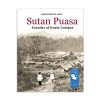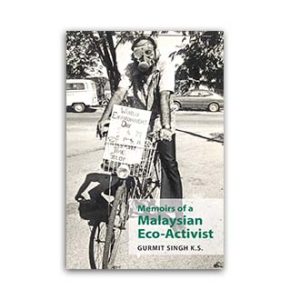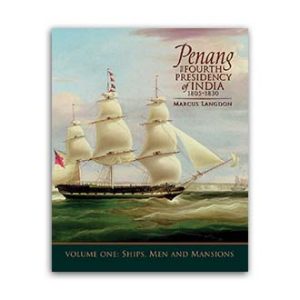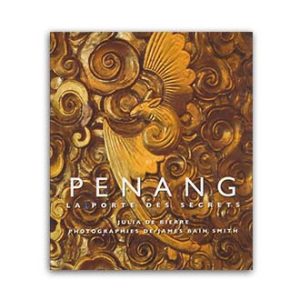Who was the founder of Kuala Lumpur, the capital city of Malaysia? Textbook history credits the Bugis chief of Klang, Raja Abdullah, while the Chinese regard the third Kapitan China, Yap Ah Loy, as the legendary founder. But closer examination reveals that the founding myths of Kuala Lumpur have omitted the earliest chapter of the city’s history.
‘Pangkalan Lumpur’ was a Mandailing trading post at the confluence of the Klang and Gombak rivers, controlling the land and river routes of the upper Klang valley. Due to the visionary leadership of Sutan Puasa, it developed into a multicultural town, attracting Sumatran and Hakka Chinese miners and traders.
Sutan Puasa was a mining entrepreneur, tin trader and agricultural pioneer. The Mandailing noble was among the adventurers and refugees who emigrated to Malaya in the aftermath of the Padri War (1803–1845) in central Sumatra. The post-Padri Mandailing and Rawa diaspora became embroiled in a succession of civil wars in Sungai Ujong, Pahang, Klang, and Perak in the Peninsula.
During Sultan Abdul Samad’s reign, Raja Mahdi’s bid for Klang’s chieftainship led to the Klang War (1866–1873), the longest civil strife in nineteenth-century Malaya. When Tunku Kudin mortgaged Selangor’s tin wealth to win the war against Raja Mahdi, Sutan Puasa fought alongside the Mandailing overlord, Raja Asal, as well as Syed Mashhor, Raja Mahmud, Raja Laut, and the Selangor patriots to defend the state’s sovereignty.
Klang, Ampang, Petaling, Ulu Klang, Kanching, Rawang, and Kuala Kubu became battlegrounds, but the war was ultimately decided by the ‘Battle of Kuala Lumpur’. War destruction, disorder and debt paved the way for British colonial intervention into Selangor in 1874.
Kuala Lumpur’s strategic location as the trading hub of a rich tin mining interior destined it to become the capital – first, of Selangor, then of the Federated Malay States, and finally, of Malaysia itself.
About the author
Abdur-Razzaq Lubis is an independent scholar, author and publisher with Areca Books. He is also known by his Mandailing pen-name, Namora Sende Loebis. Having conducted almost two decades of academic and field research about the history of the Mandailing diaspora in Malaysia, Lubis writes extensively on the politics and other facets of the Mandailing identity. He is currently championing a project to publish several key works on Mandailing folklore, music, governance, social history and the environment by himself and several noted Mandailing authors.
CONTENTS
List of illustrations
Foreword by Terence McGee
Preface by the Author
Acknowledgements
Preamble
The Story of Kuala Lumpur
1 • The Naming of ‘Kuala Lumpur’
Kuala Lumpur – a ’muddy estuary’
Was there a Sungai Lumpur?Sungai Lumpur, a tributary of Sungai Klang?
Was Kuala Lumpur, Pangkalan Lumpur?
Kuala Lumpur, a Chinese place name?
2 • Who Founded Kuala Lumpur?
Yap Ah Loy, the third Kapitan China of Kuala Lumpur
Raja Abdullah, the Bugis chieftain of Klang
Hiu Siew, the first Kapitan China of Kuala Lumpur
Other theories on the founding of Kuala Lumpur
3 • Sutan Puasa and the Mandailings in Kuala Lumpur Kuala Lumpur under the Mandailings
Raja Dori, a Mandailing leader in Kuala Lumpur
The early life of Sutan Puasa
4 • The Padri War and the Sumatran Diaspora
Religious civilisation and contestation
The Padri War
Padri campaigns to the ‘Bataklands’
The Mandailing anti-Padri movement
Rao and the expedition to Bonjol
Tuanku Tambusai’s guerrilla war
The Mandailing anti-Dutch movement
Further Islamisation and the Naqshbandi Sufi order
Exodus of the post-Padri diaspora
5 • The Mandailings and Rawas in the ‘Western Malay States’
The tradition of ‘Pai Kolang’Triangular wars
The Rawas in Pahang
The Rawa War in Sungai Ujong
The Rawas and Mandailings in Langat
The Rawas and the aboriginal people
The Rawa factor in the Pahang War
6 • The Mandailings in Upper Klang
The story of Raja Pinayungan
Sutan Puasa’s migration
Who were the Sumatran miners?
Raja Asal arrives in Pahang
Opening upper Klang
Mandailing pioneers of Ulu Langat and the upper Klang valley
The cultural landscape of Kuala Lumpur
A Mandailing Raja’s funeral in Kuala Lumpur
7 • The Expansion of Mining in Klang
Bugis chiefs, Chinese miners
System of taxation
Hulu–hilir relationship
Sumatran and Bugis rivalries
Sutan Puasa and the Kapitan Chinas
8 • The Start of the Klang War
Causes of the Klang War
Raja Mahdi’s War
Yap Ah Loy relocates to Kuala Lumpur
The installation of Yap Ah Loy as Kapitan China
The Kanching Massacre
Klang captured by Raja Ismail and Tunku Kudin
9 • Alliances and Enmities in the Klang War
Sultan Abdul Samad and Tunku Kudin
Raja Mahdi requisitions the Kuala Selangor fort
Vanquish the Mandailings
The Battle of Ampang
The ‘Rinaldo Incident’
Tunku Kudin seeks help from Pahang
10 • Tunku Kudin’s War on Kuala Lumpur Irving and Tunku Kudin
Raja Asal changes sides?
The Battle of the Two Forts
The Battle of Kuala Lumpur
The propaganda war
A brief victory for the Mandailings
Pahang forces in Ulu Klang
11 • A Battle of Annihilation The fall of Raja Asal’s forts
The fall of Kuala Lumpur
The end of the Klang War
Refugees seeking sanctuary
The stay-behind
Pahang and Minangkabau forces British intervention in Selangor
Yap Ah Loy’s Kuala Lumpur
12 • ‘Sutan Puasa’s Rebellion’
The Residential system
The ‘Pudu Outrage’
The burning of Ulu Klang
The courier-spy
The plot revealed
Expedition against Ulu Langat
Swettenham and the five chiefs
The Rawa and Mandailing refugees in Tanjong Malim
Dato’ Bahaman’s Revolt
13 • Sutan Puasa Returns to Kuala Lumpur
Pax Brittanica
Sultan Abdul Samad visits Kuala Lumpur
The transfer of the administrative capital from Klang to Kuala Lumpur
Muslim communities in Kuala Lumpur
Sutan Puasa’s agricultural legacy in Gombak
The weighing scales of Sutan Puasa
Sutan Puasa’s kin
Religious endowments and the Naqshbandi Sufi order
Sutan Puasa, the founder of Kuala Lumpur?
Appendices
Bibliography
Index












Reviews
There are no reviews yet.